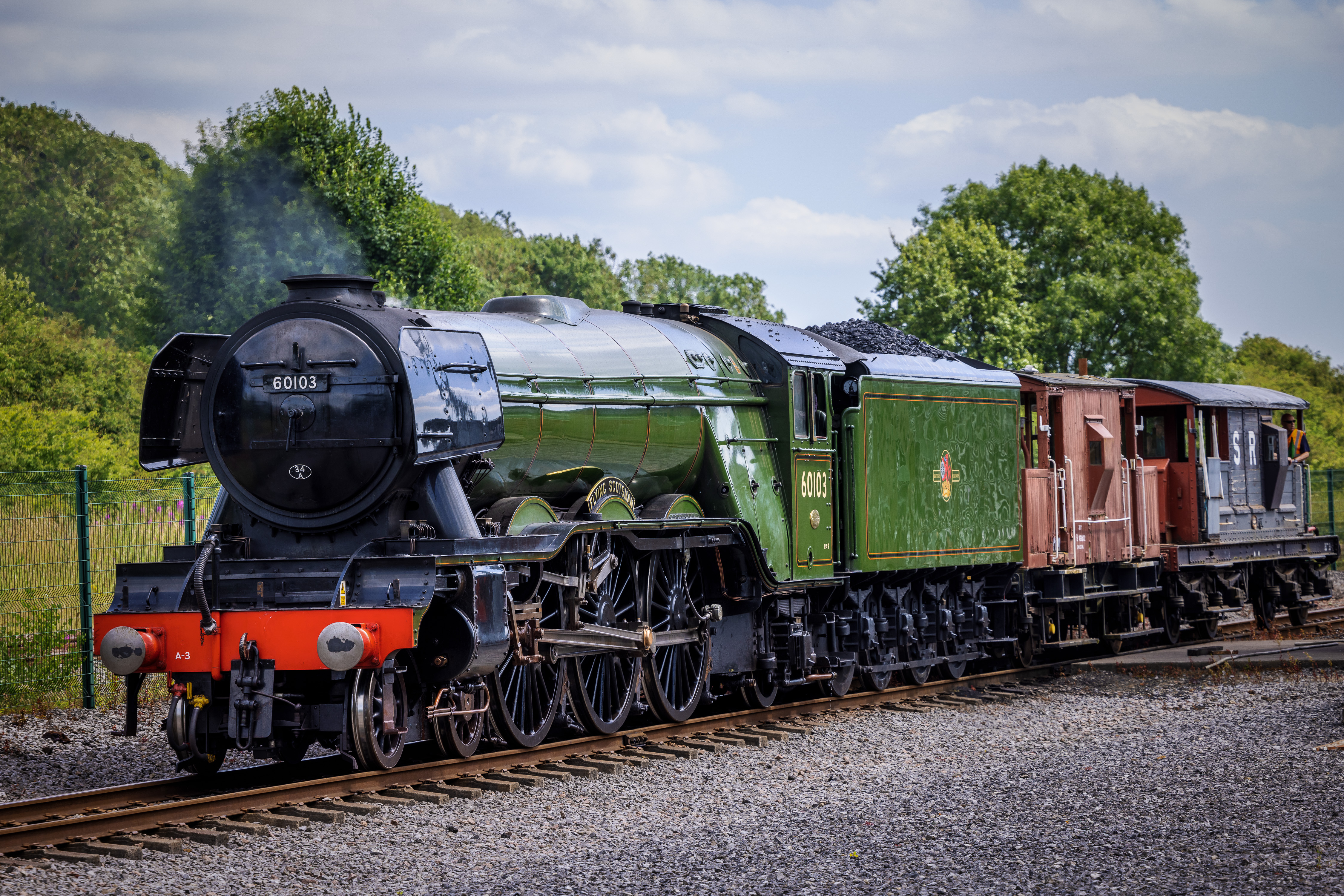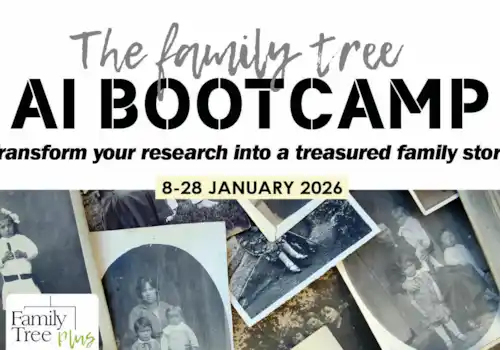05 September 2025
|
To celebrate Railway 200, the 200th anniversary of the modern railway, Family Tree caught up with Dr Mike Esbester, co-lead of the Railway Work, Life & Death Project, Senior Lecturer in History at the University of Portsmouth. Scroll down for details of Railway 200 celebratory events to visit too.
Q: This year, 2025, is the year that we’re celebrating Railway 200. Why is this such good news?
Dr Esbester: I love Railway 200, because this is a wonderful opportunity to see railway history really publicly. What's really great about Railway 200 is the sheer volume of events and public interpretation activities that are taking place to mark the anniversary.
(For details of Railway 200 celebratory events, click here.)
Q Can you tell us a little about what happened two centuries ago that makes this such a momentous anniversary in railway history?
Dr Esbester: It's a really interesting time, because we can draw a starting point and say, the Stockton and Darlington Railway was the first public passenger steam-hauled railway journey (27 September 1825).
Nothing just comes out of nowhere. There have been lots of developments that take us to Stockton and Darlington in 1825: the early development of the steam engine as a static entity, for instance. So we think about Richard Trevithick, Timothy Hackworth, and George Stevenson - early pioneers of the technological side of things, which is all really important.
However, what’s different about 1825 is that's the point that railway starts to get public notice. By 1830 there is the Liverpool and Manchester Railway, the first modern intercity railway, designed with passenger and freight transport in mind. From that point, the potential is demonstrated for steam railways.
Q The pace of change that was to follow was dramatic, wasn’t it. Can you tell us about the impact on our ancestors’ world, their landscape and soundscape?
Dr Esbester: It’s a dramatic change. And people were talking about it in those terms at the time as well, about conquering nature, which is both seen as a positive and something to be quite worried about in some quarters.
As you had with the canal building previously, some large landowners did not really want this newfangled technology crossing their territory or being visible to them. Where they do graciously allow it across their territory, it is at vast cost to the railway companies. Some of them also built in clauses about disguising the developments so you can’t see it from their property and it's not really intruding on their lives in that way.
The technological side of things is important to note too, from the building of early wagon ways to steam-hauled traction. Fundamentally, however, technology has got to do something for people, whether it’s moving people or moving goods, mail or newspapers – it’s there to serve a purpose. This social and cultural impact is important. While the technology is on one level important, of course, so too is the social and cultural impact of the railways.
Q: How quickly do railways take off?
Dr Esbester: We’re up in the millions of journeys very quickly in the 1840s, 1850s, but not everyone is on the move. Railways have a huge impact, but they don't necessarily affect everyone instantly and that dramatically. What's really interesting is the potential - that freedom of circulation - not just for people, but for news and ideas. So, on one level, the railway does broaden people's horizons just by virtue of being there.
Q: Were there any reservations about the railway?
Dr Esbester: There is boosterism to try to sell the idea. But there's also a real concern. People don't know what to make of it. And medically, there are questions that are raised, for example, about the effect of traveling through tunnels, such as: is all the air going to be pushed out of the tunnels and the carriages, and are people going to suffocate with the speed that they're travelling?
There are also concerns about the social disorder that they may bring, with landowners being concerned about what's happening on their territory, with the hoi polloi passing through. When you get to Chartism in the late 1830s into the 1840s, railways are used there to move troops and police around.
Q: Can you give us a flavour of the sorts of occupations that an ancestor may have had if working for the railway?
Dr Esbester: OK, that's a tough ask, but yes. The bigger railway companies did virtually everything themselves, from building the infrastructure to putting together the smallest components; from manufacturing pencils to manufacturing the steam engines. So you could have ancestors who were in the workshops, building the wagons and carriages, for instance, in heavy industry.
We tend to think about the drivers and firemen – the 'labour aristocracy’ - but also remember: porters guards, signalmen, cleaners (locos, carriages, offices), marketing, hotel and catering staff, shipping, docking industry, air and road transport employees (the early ones being horse and cart) too.
Basically, you think of a job that someone might have had, and they've probably done it on the railways at some point.
Q: Can you tell us a little about the Railway Work, Life & Death Project (RWLD Project)? How it came about, and the latest update?
Dr Esbester: We started about 10 years ago at a conference at the National Railway Museum (NRM) to bring together railway historians and family historians. We did a proof of concept with the volunteers, and it worked. The volunteers are absolutely brilliant, as they have been throughout the project. Full recognition and a massive thanks to them for the thousands of hours of work they put in across the board.
It began with a trial run of about 4,000 records - reports that were produced by the state accident investigators - into railway worker accidents - and shared them with the volunteers to transcribe. Since then we expanded to work with the Modern Records Centre at the University of Warwick, where they have trade union records, some of which we've released within the project already.
So the RWLD Project now runs to transcriptions of about 115,000 people (about 25,000 of those are trade union records. The records include those of the Amalgamated Society of Railway Servants, which becomes the National Union of Railwaymen, which is now the RMT – and which has been absolutely fascinated by their own history.
The most recent records that we've been dealing with have been those produced by the railway companies themselves, covering accidents to the workforce from 1855 through to 1929, and they're held at The National Archives at Kew and cover England and Wales. Scottish records are National Records Scotland, and Northern Irish records are at PRONI.
Thanks to the Railway Work, Life and Death Project's database, researchers may now triangulate between the same person who appears in a state accident investigator's report, a trade union record, and the railway company record. And we can see some slightly different points of view about what might have happened, which is really revealing.
Railway ancestors podcast episode: interview with Dr Esbester
Tune in to the Family Tree Talk podcast, episode 31, to hear the full interview, upon which this written interview is based, by Helen Tovey & Nathan Ward with Dr Mike Esbester and learn more about our ancestors who worked on the railway
Explore the Railway Work, Life & Death Project database free
Find details of selected Railway 200 related events below
Current - running until 26 September
Scots on the Move: Railways and Tourism in Victorian Scotland
The exhibition, Scots on the Move, by the National Records of Scotland tells the story of the introduction of the railways in Victorian Scotland and how this encouraged and enabled people to travel across the country for business and pleasure.
Mon-Fri, 09:00-16:00 until 26 September.
The exhibition will remain, in a digital form, available to view here: https://bit.ly/41paKxs, after the physical exhibition itself ends (26 September).
See also the link to the NRS Railway Records Research Guide: https://bit.ly/45UcIaI
The exhibition is free and open to all.
▶ National Records of Scotland’s General Register House, Adam Dome on Princes Street.
27 & 28 September
Celebrating the 50th anniversary of the National Railway Museum
Station Hall reopens on 26 September and the weekend of 27 & 28 sees a programme of celebratory birthday events, some of which are already sold out.
Central Hall, a new gallery space, is under construction.
The museum is open 10am-5pm 7 days a week, apart from 24-26
December. Free entry, but booking online in advance is recommended by the museum to save delay on entry during busy times: https://bit.ly/468Ix0x
▶ National Railway Museum, Leeman Road, York YO26 4XJ
www.railwaymuseum.org.uk/birthday-weekend

25-29 October
Flying Scotsman returns to the North Yorkshire Moors Railway
A Railway 200 celebratory event. Visitors can pre-book seats for a 2hr 35min immersive steam travel return journey. From £54.50.
▶ North Yorkshire Moors Railway, Grosmont Station, Grosmont, YO22 5QE
www.nymr.co.uk/flyingscotsman
Railway 200 events in 2025
Explore the listing of registered Railway200-related events
Find details of 345 activities and events celebrating Railway200 – and the 200th anniversary of the start of the modern railway. Attractions include talks and exhibitions, in-person and online.
Search the map for attractions near you, and filter by the theme of ‘railway history or heritage’ for more historical/familyhistory relevant search results. We would also advise that you check with venues of interest to you as the details on this hub page make a useful starting point but may not be entirely up to date.
▶ https://railway200.co.uk/search-for-activities-and-events/







